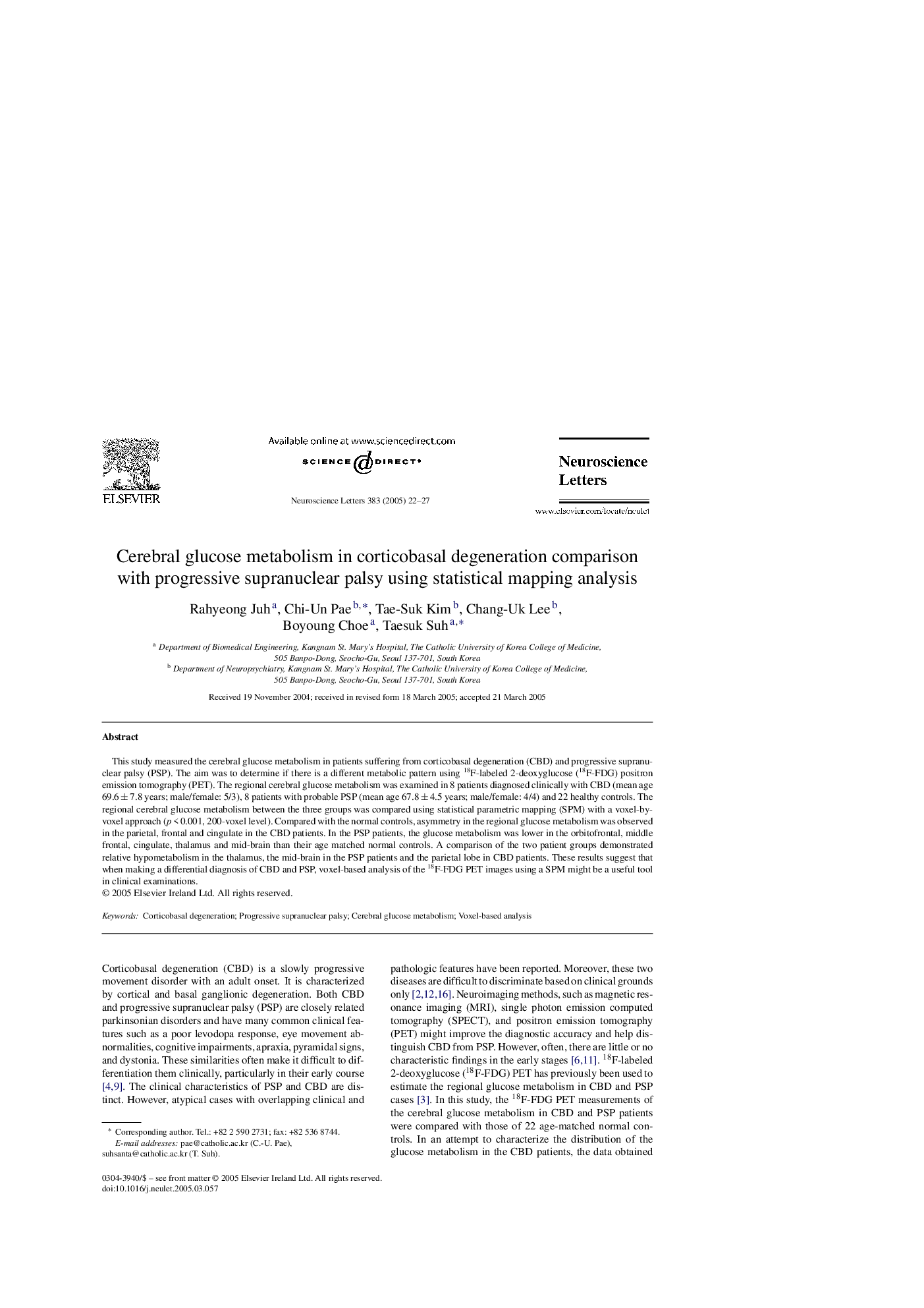| Article ID | Journal | Published Year | Pages | File Type |
|---|---|---|---|---|
| 9429187 | Neuroscience Letters | 2005 | 6 Pages |
Abstract
This study measured the cerebral glucose metabolism in patients suffering from corticobasal degeneration (CBD) and progressive supranuclear palsy (PSP). The aim was to determine if there is a different metabolic pattern using 18F-labeled 2-deoxyglucose (18F-FDG) positron emission tomography (PET). The regional cerebral glucose metabolism was examined in 8 patients diagnosed clinically with CBD (mean age 69.6 ± 7.8 years; male/female: 5/3), 8 patients with probable PSP (mean age 67.8 ± 4.5 years; male/female: 4/4) and 22 healthy controls. The regional cerebral glucose metabolism between the three groups was compared using statistical parametric mapping (SPM) with a voxel-by-voxel approach (p < 0.001, 200-voxel level). Compared with the normal controls, asymmetry in the regional glucose metabolism was observed in the parietal, frontal and cingulate in the CBD patients. In the PSP patients, the glucose metabolism was lower in the orbitofrontal, middle frontal, cingulate, thalamus and mid-brain than their age matched normal controls. A comparison of the two patient groups demonstrated relative hypometabolism in the thalamus, the mid-brain in the PSP patients and the parietal lobe in CBD patients. These results suggest that when making a differential diagnosis of CBD and PSP, voxel-based analysis of the 18F-FDG PET images using a SPM might be a useful tool in clinical examinations.
Keywords
Related Topics
Life Sciences
Neuroscience
Neuroscience (General)
Authors
Rahyeong Juh, Chi-Un Pae, Tae-Suk Kim, Chang-Uk Lee, Boyoung Choe, Taesuk Suh,
